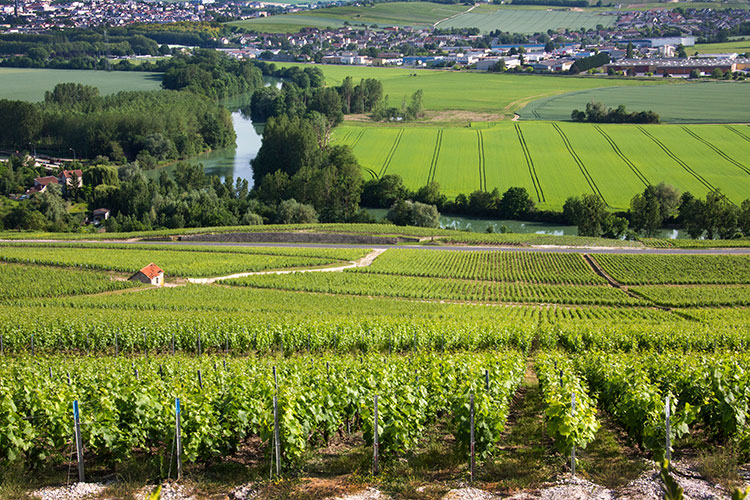Champagne has long been associated with luxury living, but rising temperatures in Europe and increasingly unstable weather are raising concerns that the French Champagne region could become unsuitable for producing the renowned sparkling wine.
Over 325 million bottles of champagne were delivered from the Champagne region in 2022, surpassing €6 billion in sales for the first time, with the largest markets being the US, UK, and Japan. However, just a year later, climate uncertainties cast doubt on the future of this beverage. Wineries will need to adapt to survive, potentially altering the taste of champagne in the process, reports CNBC.
According to S&P Global Sustainable’s report, the Champagne region’s exposure to physical risk from drought is set to nearly triple by 2050 and the sixth decade of this century, posing serious challenges for vineyards.

The report rates regions on a scale of 1-100, where 100 represents maximum risk exposure. The risk of drought in Champagne is predicted to increase from its current level of 16 to 43 by 2050, then double to 88 by 2090 if the current climate conditions persist.
Drought isn’t the sole factor disrupting production, as wildfires, floods, and frosts have become more frequent in recent years.
Even if grapevines yield fruit in these conditions, the altered conditions can affect fruit development and result in damage.
“If grapes are exposed to too much extreme UV radiation, they’ll effectively get sunburned and that will damage the taste,” said Mat Hodgson, founder of English wine distributor Grape Britannia. He added that increased warmth can also alter the grape acidity crucial for champagne’s freshness.

Champagne’s most famous rule is that it must be produced in the French Champagne region, but an extensive list of regulations encompasses specific viticulture practices – sourcing grapes from designated areas, particular pressing methods, and using only select varieties.
The use of pesticides and additional acidification is prohibited, and all production stages must occur in Champagne, including bottling.
“Twenty years ago, harvest took place at the end of September, early October. Now we harvest grapes at the end of August and the start of September,” said Claire Sarazin, representative of the Champagne wineries association, to CNBC.
Variable temperatures are also leading to naturally sweeter champagne.
“We have so much sun and sugar that we basically don’t need to add sugar anymore. It’s not a problem for now, but it’s something we have to think about,” Sarazin noted.
According to critics, some champagnes are already tasting markedly different from those enjoyed many years ago.